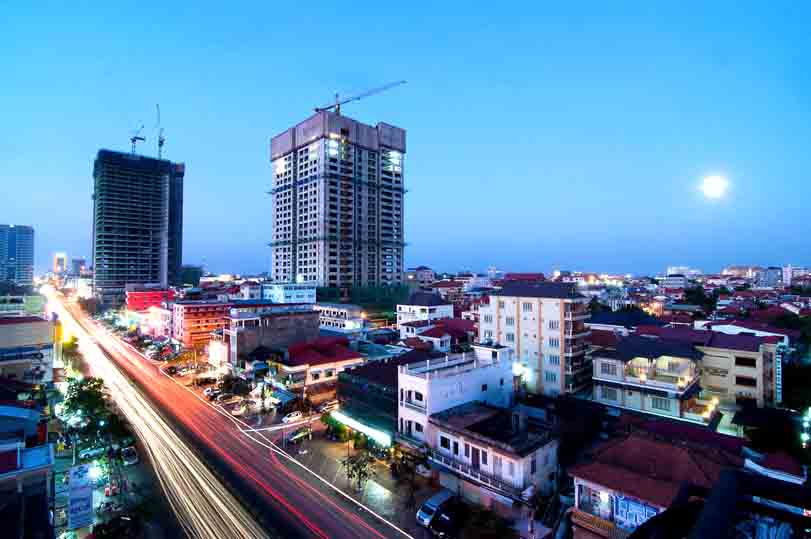They call it ‘ruin-lust’ and photographer Chea Phal has it bad. The symptoms? A romantic fascination with forgotten and decaying buildings coupled with a determination to capture their image before it is too late. The result? Forgotten, Sometimes Hidden, an exhibition of hauntingly beautiful photographs of Phnom Penh’s overlooked, unloved and at-risk architectural treasures.
This romantic fascination with decaying buildings and their sociological significance is far from a new phenomenon. It subtends the artworks of the 18th and 19th centuries, from Casper David Friedrich’s landscape paintings to Eugene Atget’s fin de siècle photographs of Paris in the throes of modernisation. In the latter half of the 20th century. Detroit, a city in seemingly perpetual decline, provided the perfect backdrop for photographers in the grip of ruin-lust, such as Romain Meffre and Yves Marchand.
It was Marchand’s photographs of Detroit in dissolution which inspired Chea, whose first solo exhibition is being unveiled at The Plantation Hotel during this year’s Our City Festival. “Marchand’s photos were mind-blowing,” he enthuses. “That’s what made me jump-start to photographing these buildings.”
Forgotten, Sometimes Hidden follows the trajectory of Chea’s countless days spent exploring Phnom Penh, during which he seeks out the city’s architectural secrets. The photographs capture the historical and aesthetic value of 12 buildings: some are well known, such as Vann Molyvann’s White Building; others are anonymous, rendered only through close-range shots of crumbling brick or exposed internal structures. “I guess when people see my pictures they might see the building first,” Chea explains. “But then they notice the emptiness inside.” This emptiness conveys a certain vulnerability as if, stripped of intended form and functionality, these buildings lie helpless in the face of eventual destruction.
Chea’s anxiety about the fate of Phnom Penh’s architectural landmarks is symbolised through his use of natural light in Forgotten, Sometimes Hidden. Part of the exhibition is dedicated to photographs taken in the so-called ‘magic hour,’ that suspended moment between day and darkness standing as a metaphor for the moribund buildings’ twilit existence. “I sometimes revisit the same places again and again to seek better lights. For me, the rather dark atmosphere can give us some sort of feeling that those buildings are fallen in an unfortunate situation,” he says regretfully. “Somehow, these structures are the least permanent of things. People feel differently about the city’s development, but for me Phnom Penh is losing its identity. I try to photograph it before it’s gone.”
For Chea himself, his work conjures mixed emotions. “There’s the excitement of seeing and capturing what most people haven’t seen or failed to see. It’s both thrilling and challenging to get into those neglected buildings and photograph them. Then I imagine what the building looked like in its prime. Some buildings deserve better care and love, and it saddens me to see their withered condition.”
The exhibition constitutes not only an image of a city in flux, but also a portrayal of an aspect of Cambodian history and identity in danger of disappearing. Chea hopes his work can connect people to this shared history, capturing the present while linking it to the past and future. “Nothing would make me happier than if I can provoke the audience to rethink this wonderful architecture. I think in about a decade it will be very hard to imagine what Phnom Penh looks like now. I hope the frozen moment in still pictures could help the next generation to understand and learn about our past.”
WHO: Chea Phal
WHAT: Forgotten, Sometimes Hidden photography exhibition
WHERE: The Plantation, #28 St. 184
WHEN: Until October 7
WHY: See your city before it’s gone
